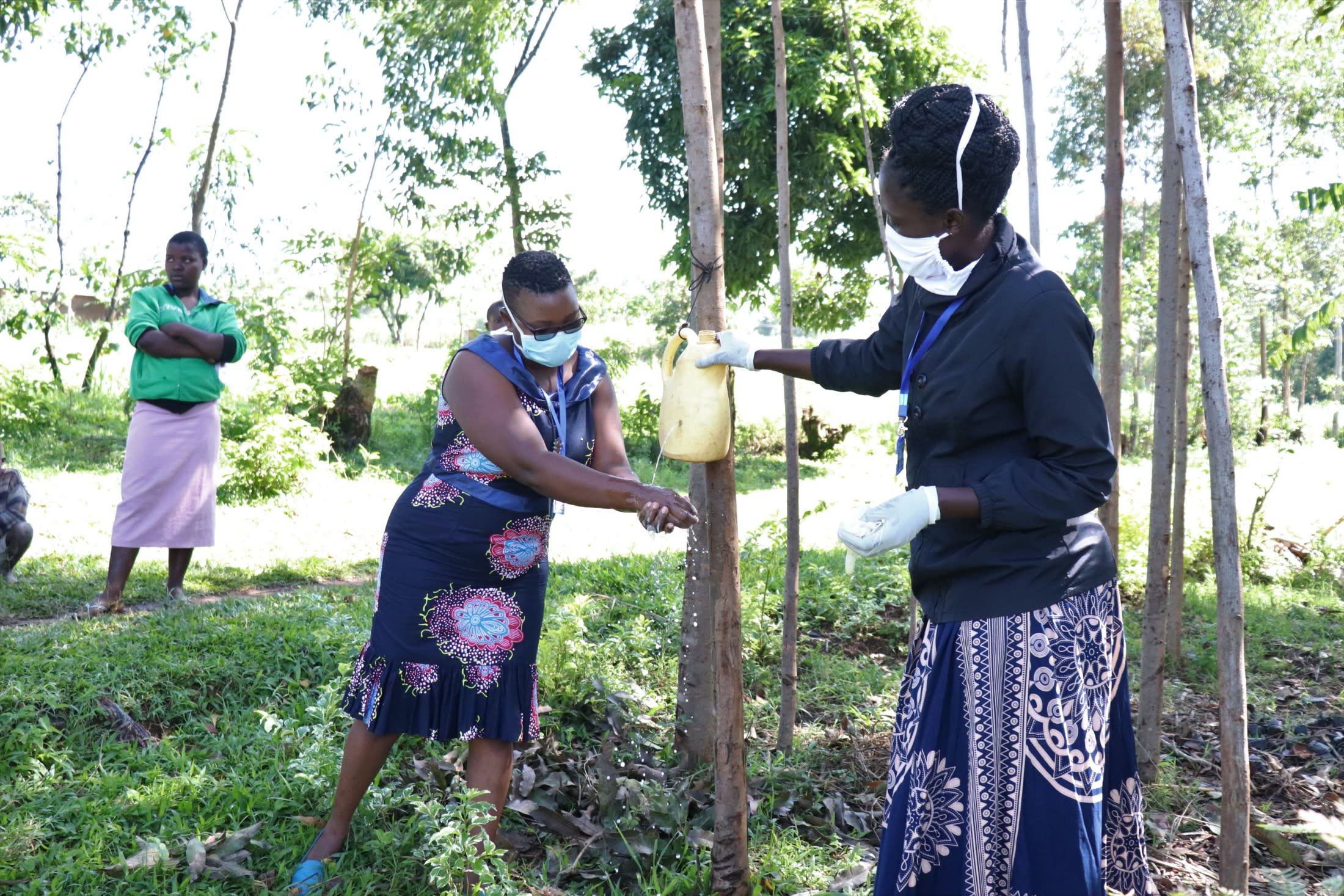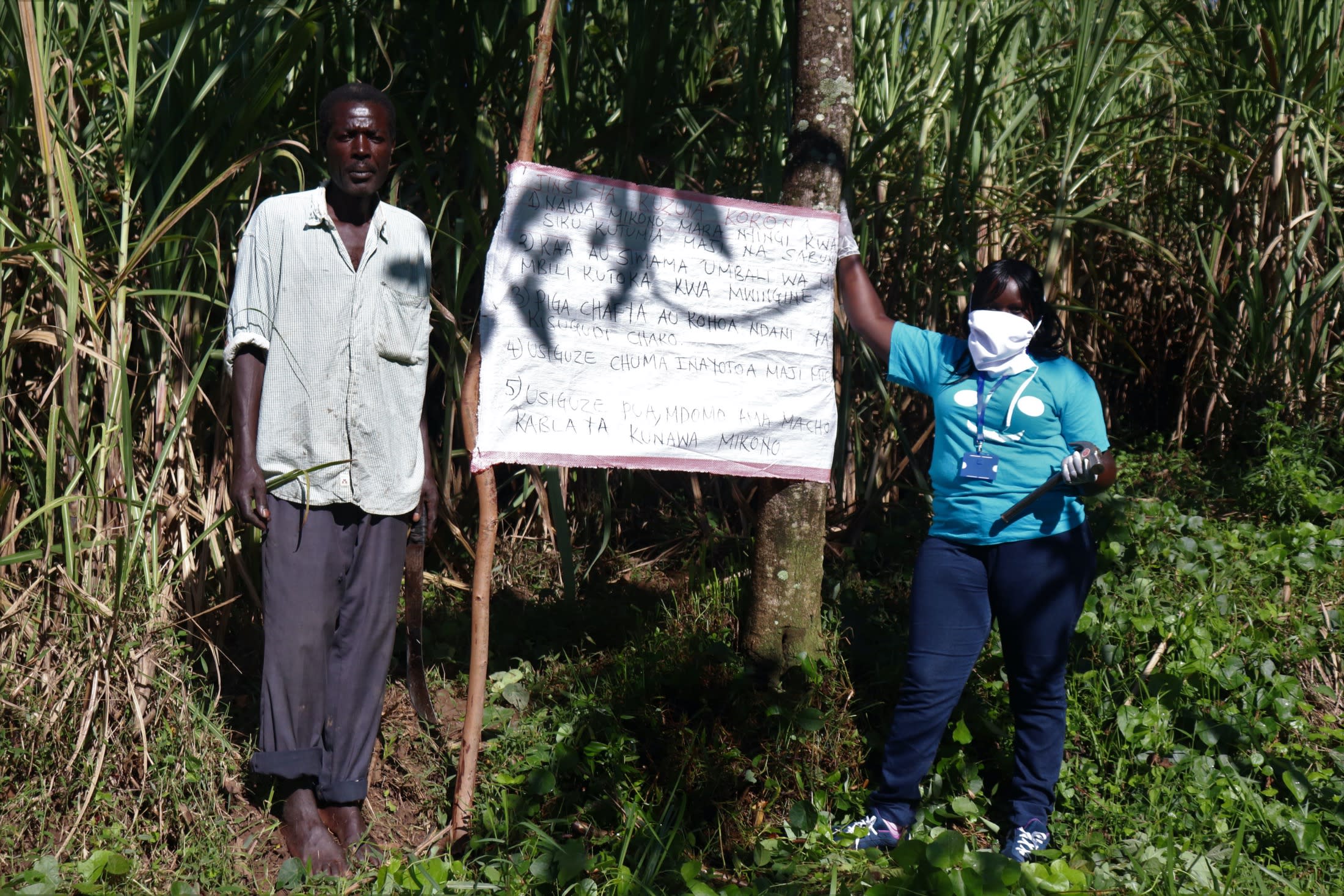This project is a part of our shared program with Western Water And Sanitation Forum. Our team is pleased to directly share the below report (edited for clarity, as needed).
Background Information
This unprotected spring is located in Namanja Village, Butali Sub-Location, Matioli Location, Butali-Chekulo Ward of Kakamega County. The spring serves an approximate population of 540 people from 60 households of which 290 are female and 250 are male. The water is used for drinking, cooking, washing, and farm irrigation.
The spring also serves Friends School Namanja Primary located 800 meters away. The school has a seasonal borehole that not only is insufficient for such a high population, but dries up part of the year. Namanja Primary School has a total of 1023 students along with 52 more students enrolled in early education programs. The school also employs 30 teachers and three support staff.
(Editor’s Note: While this many people may have access on any given day, realistically a single water source can only support a population of 350-500 people. This community would be a good candidate for a second project in the future so adequate water is available. To learn more, click here.)
Justification
The spring catchment area is densely surrounded by sugarcane plantations. Since it is unprotected, the water is often contaminated by runoff that includes chemicals and fertilizers used on the crops. The water is also contaminated when people step into it to fetch and by animals that are also watered at the spring. Community members affirm that they have suffered for a long time from water-related illnesses such as typhoid, dysentery, and other stomachache complications. Many people do not boil or treat their water, and will benefit greatly from sanitation and hygiene training.
Students from the nearby school also waste a lot of time searching for safe water. When they arrive at William Katui Spring, they often have to wait for water to settle. With such a high population in its vicinity, it is muddied by constant activity. Children are particularly affected by water-related illnesses after drinking from unprotected sources, and absences often result.
Sanitation standards are also low, because many households have no usable latrines. As WEWASAFO conducted their survey, it was evident that open defecation is a big problem in the community. During rainy weather, this waste is also washed into the unprotected spring. The survey also found no hand-washing facilities around the latrines. Few households had constructed clotheslines and dish racks. Many of those that had dish racks still aired their utensils out on the ground, ignorant that this behavior subjects things to contamination.
Malaria rates were also reported as high. Karen, one of WEWASAFO's staff, pointed out that mosquito nets were being misused. Instead of keeping insects out of the house, locals were more concerned about using these nets to keep wild animals out of their gardens and crops.
A lot of money and time has been wasted treating water-related illnesses. The people of Namanja Village are appealing for partnerships through WEWASAFO to help protect William Katui Spring and construct new sanitation facilities. They believe this will go a long way to reduce bad health, save money and time, and thus reduce poverty.
Water and Sanitation Management Committee Training
This training was held from November 10-11 at William Katui's homestead. Training was attended by a total of 12 participants of which eight were female and four were male. The aim was to equip the committee with the skills needed to manage and maintain the spring.
The facilitator informed the community that the donor and organization come to them willing to contribute 80%. This is because they wish the community to feel a sense of ownership by giving 20%. The community was encouraged to provide the following local materials for construction: hardcore, ballast, bricks, clean sand, and fencing poles. The community should also be ready and willing to host the construction team workers during the process. The committee also needs to take responsibility after construction is complete; to ensure the area is kept clean and to write and enforce rules for proper behavior.
The group selected five households that will benefit from new sanitation platforms (easy-to-clean concrete latrine floors). These families will need to sink a latrine pit and provide extra clean sand, bricks, and wall materials.
The committee also enjoyed a practical session at the spring site, where they learned about how the water is contaminated and how to prevent it. The group listed the following as main sources of pollution:
- Farming around the spring
- Soil erosion
- Animals grazing
- Bathing and washing clothes in the water
- Lack of drainage
- Latrines too near the source
- Open defecation
When the realized the great impact of these practices, the committee agreed to do all thy can to prevent them. The partner braved heavy rains to bring this community information about good health, and both The Water Project and Water and Sanitation Management Committee are very grateful.
Community Health Worker Training
The community health worker (CHW) training was held from November 12-13. 13 people were in attendance. The purpose of these sessions was to equip community members with the information needed to practice and promote good hygiene practices in their village. This training included a session on disease transmission, hand-washing, and water and food handling.
The facilitator took participants through the role of a CHW. They should educate the community on:
- Hygiene practices
- Behavior at the spring
- Nutrition and diet
- HIV/AIDS and immunization
- Family planning
- Proper water and food handling
Five participants were elected to take the title of CHW.
Project Results:
Spring Protection
The protection of William Katui Spring is complete and is now in use by community members. The community has already confirmed a great reduction in cases of waterborne diseases. In fact, no new cases have been reported since construction was completed! This is because the water is no longer open to contamination from surface runoff and human activities.
Women no longer have to waste time waiting for the water to clear before the next person fetches. They now have more opportunities to engage in more economic activities. The committee that was trained has already written and started enforcing rules at the spring. Nobody is permitted to bathe, wash clothes, clean utensils, or water their animals at the spring. The community members are happily following these rules because they now know the dangers those bad practices pose to their health.
It was also obvious that homesteads have already made improvements to their environmental hygiene. Most are now using sanitation facilities such as clotheslines, dish racks, and compost pits.
Household Sanitation Platforms
Sanitation platforms have been installed and are now in use by beneficiaries. People find them much easier to clean, and community members have noticed a decrease in open defecation. Now that other homesteads have seen these five latrine examples, they desire to construct them for their own compounds.
The community is thankful for the donor, TWP, and WEWASAFO for making this project and training possible. They have promised to unite to make sure these good results are sustained.
 Protected Spring
Protected Spring
 Rehabilitation Project
Rehabilitation Project

























